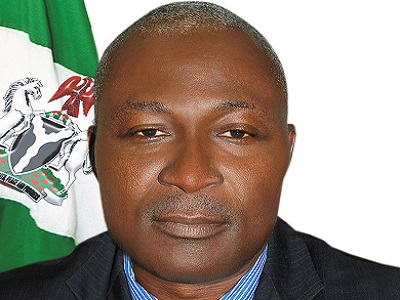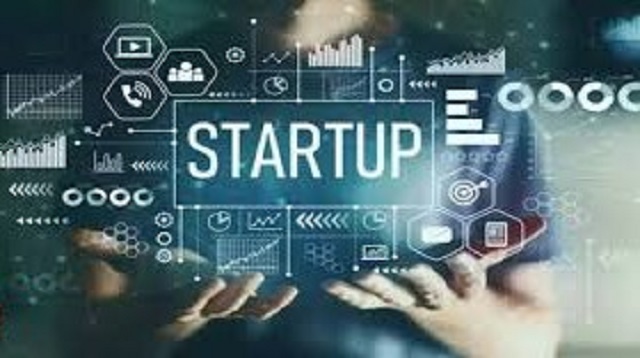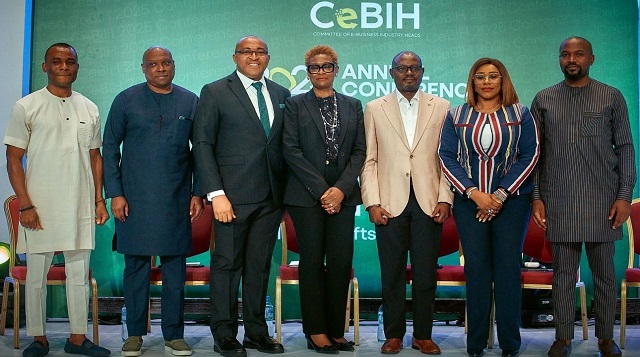General News
BPE Assures on Steady Power Soon

Benjamin Dikki, director general, Bureau of Public Enterprise (BPE) has asked anxious Nigerians desirous of steady public power supply to be patient as new core investors in the sector streamline strategies to get the country on sound footing.
Dikki stated at the public presentation of the Sapele Power company in Delta state to its core investor, Messrs CMEC/EuraAfric Energy Ltd that Nigerians were more than ever before “closer to a new dawn where power would be taken for granted.”
He assured that that in a few years, “the globally acclaimed successes recorded in the Telecom reforms would pale when compared to the opportunities expected in the power sector reform.”
Dikki said the determined leadership of the President Goodluck Jonathan and Vice President Mohammed Sambo, and their “insistence to the strict adherence to transparency and accountability was the difference between success and failure of the transaction.”
The country’s political leadership, Dikki noted, “has made a conscious effort to make the private sector the driver of economic growth in Nigeria; adding that the power sector reform was part of the administration’s avowed commitment to make Nigeria better than it met it.”
He stated that it was not by chance that Nigeria’s power sector reform and privatization was “adjudged the biggest, most transparent and comprehensive power sector privatization in recent history.”
On the low and still erratic power situation nationwide, despite the privatization efforts and promises of greater stability; Dikki assured the situation would improve drastically soon. He assured that the Sapele Power Plc would soon achieve the maximum installed capacity and begin to expand capacity, creating more jobs and opportunities for all Nigerians.
Chigbo Anichebe, head, public communications at BPE told Nigeria CommunicaitonsWeek that following the emergence of CMEC/EURAFRIC ENERGY LTD as the preferred bidder for Sapele Power Plc. for a bid consideration of $201 million, the company paid up $50,250,000, which is 25 per cent of the consideration by the deadline of March 21, 2013 as was required.
However, it was unable to complete the payment of the balance 75 per cent by the end of deadline on August 21, 2013; it has none-the-less paid an additional amount of $79,186,656.55 to bring its total amount paid to $129,436,656.55.
Anichebe stated that CMEC/EURAFRIC requested for extension of the payment deadline in accordance with the Share Sale Agreement. “This request was carefully considered and the Attorney General’s advice sought before the National Council on Privatization (NCP) gave its approval. On that basis, the Bureau wrote to CMEC/EURAFRIC conveying the approval, but quickly reminded the company that the extension was subject to its payment of the penalty, which is interest on the outstanding balance (at the prevailing rate of LIBOR + 5%) with effect from the day of default. The company was also warned that the extension, which would elapse on January 29, 2014, was final. The payment deadline was met by the core investor, hence the handover,” said Anichebe.
The handover marks the concluding stage of the transaction for five (5) generation companies and ten (10) distribution companies. The remaining two successor companies (Afam Power Plc. and Kaduna Disco) will be handed over to their respective owners after payment of the 75 per cent balance of the acquisition cost.
General News
Top Nigerian Startups Secure Funding Boost @ iHatch Demo Day Awards

Nigeria’s startup ecosystem received a fresh injection of momentum as top emerging ventures secured funding and investor attention at the iHatch National Demo Day, where Interface Africa clinched the highest prize of $15,000.

The 4th cohort of the NITDA–JICA-backed accelerator brought together founders, policymakers, and venture stakeholders in Abuja, showcasing innovations ranging from clean-energy financing and digital food marketplaces to next-gen fintech tools.
The startups went rounds of running through state-level selections and regional competition. iHatch was established in 2021 as a strategic partnership to create an enabling environment for young Nigerians to develop and scale their innovative solutions.
The iHatch National Demo Day (4th Cohort), is an initiative by NITDA and JICA which provides a clear pathway for homegrown talent to contribute significantly to economic diversification and digital transformation.
After rigorous selection processes, the top founders converged to pitch their innovations, recognised the standout performers, which are:
Interface Africa with $15,000, the firm is driving Nigeria’s clean energy transition by enabling structured and affordable solar financing.
Ahioma with $12,000, the firm enhances food accessibility with a digital marketplace connecting consumers directly to trusted vendors.
Linia Finance with $10,000, the firm is helping Nigerians take control of their finances with tools for budgeting, tracking, and smart money planning.
Chapta got a laptop reward. They delivering an offline-capable school application ensuring consistent, accessible learning for students everywhere.
Softdrop also got a laptop reward, they solve logistics challenges through a modern delivery platform designed for speed, convenience, and efficiency.
General News
Fidelity Bank to Host Virtual Masterclass on New Tax Law

Fidelity Bank Plc, a leading financial institution, will host a free virtual training on the Nigeria Tax Act 2025 (NTA) as part of its commitment to helping small businesses prepare for the upcoming legislation.

Fidelity Bank
The masterclass is scheduled for 10:00 AM (Nigerian time) on Friday, 12 December 2025. It will provide participants with clear insights into changes in the tax framework, the impact on income and business operations, and practical steps to avoid penalties in 2026.
Attendees will also learn strategies to stay ahead in an evolving regulatory environment.
The Nigerian government enacted major tax reforms on 26 June 2025 when President Bola Ahmed Tinubu signed four tax bills into law.
These Acts will take effect on 1 January 2026 and represent a significant overhaul of the country’s tax system.
The reforms aim to modernize and harmonize Nigeria’s tax framework, improve revenue generation, broaden the tax base, and create clearer rules for individuals, businesses, and government agencies.
“Our decision to host this masterclass reflects our commitment to empowering businesses with the right information ahead of the commencement of the new tax regime.
“Information is money and a well-informed business owner is already steps ahead in the race to success.
“This is why we are bringing experts to provide accurate details and demystify the tax act,” said Osita Ede, Divisional Head, Product Development, Fidelity Bank Plc.
Interested participants can register via https://bit.ly/2026TaxLawMasterclass .
General News
PalmPay MD Seeks Deeper Financial Inclusion @ CeBIH Annual Conference 2025

PalmPay, Nigeria’s leading digital banking platform, has renewed its commitment to deepening financial inclusion across the country. At the CeBIH Annual Conference 2025, themed “Reimagining Financial Inclusion through Cultural Shifts in Consumer Credit,” PalmPay’s Managing Director, Chika Nwosu, urged industry players to deepen financial inclusion by embracing community-aligned solutions and customer-centric innovations that can better serve Nigeria’s underserved and unbanked populations.

Speaking during a panel session titled “Social Inclusion, A Veritable Tool for Financial Inclusion,” Chika Nwosu joined other industry leaders to share insights on strengthening participation among women, rural dwellers, low-income earners, and other financially excluded groups.
Chika Nwosu highlighted PalmPay’s commitment to inclusive finance through its 500,000-strong agent network, which enables seamless cash-in/cash-out services for unbanked users across Nigeria. He also emphasised the importance of PalmPay’s USSD platform, 861#, which allows users with basic phones or limited internet access to perform essential financial transactions.
“Financial inclusion goes beyond access; it must be equitable and tailored to real-life needs,” Chika Nwosu said. He shared how PalmPay leverages behavioural insights to design impactful services, including affordable health insurance, reliable bill payments, merchant solutions, and automated savings features that support financial discipline among users.
The session further examined the role of grassroots agents and community touchpoints in driving last-mile adoption. Chika Nwosu noted that PalmPay’s widespread community presence continues to build trust and encourage excluded populations to embrace digital financial tools.
The session was moderated by Ronke Kuye of the CeBIH Advisory Council and featured representatives from E-Doc Online, SmartCash Payment Service Bank, SANEF, and EFINA.
PalmPay reaffirmed its commitment to driving accessible, secure, and inclusive financial services for all Nigerians. PalmPay is a leading digital banking platform driving financial inclusion and economic empowerment in underserved emerging markets. Through its secure, user-friendly, and inclusive suite of financial services, PalmPay empowers individuals and businesses with tools to manage and grow their money.
PalmPay offers a comprehensive range of products, including mobile payments, savings, and micro-insurance via its app and mobile money agent network.
Since launching in Nigeria in 2019 under a Mobile Money Operator license, the platform has grown to over 35 million app users. PalmPay has operations in Nigeria, Ghana, Tanzania, and Bangladesh.

 Telecom2 days ago
Telecom2 days agoAirtel Africa Foundation Opens Undergraduate Scholarship Portal in Nigeria

 E-Financial2 days ago
E-Financial2 days agoEcobank Nigeria to Fully Repay $300m Eurobond Ahead of Schedule

 Broadcasting2 days ago
Broadcasting2 days agoCKay’s “Love Nwantiti” Crosses Billion-Stream Mark on Spotify

 Telecom2 days ago
Telecom2 days agoYouTube Nigeria Unveils 2025’s Top Lists and Launches New YouTube Recap Feature

 General News2 days ago
General News2 days agoPalmPay MD Seeks Deeper Financial Inclusion @ CeBIH Annual Conference 2025

 E-Financial2 days ago
E-Financial2 days agoReps Give Banks Four-Day Ultimatum on Tax Deductions, Charges

 General News2 days ago
General News2 days agoAI-Powered Fraud Drives Global Race for Deepfake Defenses

 Telecom1 day ago
Telecom1 day agoMTN Nigeria Launches Unlimited 5G Broadband Plans to Boost Digital Inclusion



























